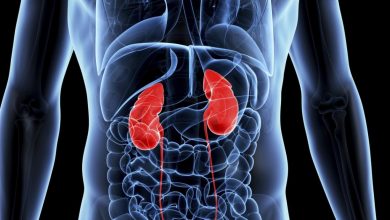Sports have always held a special place in human society, embodying values like discipline, fair play, and the pursuit of excellence. However, the pursuit of victory has sometimes led athletes down a darker path, with the use of doping and prohibited substances tarnishing the integrity of sports. In this blog post, we will delve into the world of doping, its consequences, and the ongoing battle to maintain a level playing field.
Defining Doping: Doping refers to the use of performance-enhancing substances or methods by athletes to gain an unfair advantage in sports competitions. These substances can include anabolic steroids, stimulants, diuretics, hormones, and even blood doping, where an athlete’s blood is manipulated to increase oxygen-carrying capacity.
The Temptation of Victory: The allure of victory and fame often fuels the temptation to resort to doping. Athletes may feel immense pressure to perform at their peak, especially in high-stakes events like the Olympics or professional tournaments. The desire for glory, record-breaking achievements, and lucrative sponsorships can push some to cross ethical boundaries.
The Consequences of Doping: Doping not only undermines the principles of fair competition but also poses serious risks to an athlete’s health. Anabolic steroids, for instance, can lead to severe hormonal imbalances and organ damage, while stimulants can result in heart problems and addiction. Beyond the individual consequences, doping erodes public trust in sports and tarnishes the reputation of athletes who compete clean.
The Battle Against Doping: The fight against doping is an ongoing endeavor involving sports organizations, anti-doping agencies, and governments worldwide. Organizations like the World Anti-Doping Agency (WADA) play a pivotal role in setting and enforcing anti-doping rules. Athletes are subject to rigorous testing, both in and out of competition, to detect the presence of prohibited substances.
Education and Prevention: Preventing doping requires a multi-faceted approach, with education playing a crucial role. Athletes need to be aware of the risks associated with doping and understand the importance of maintaining the integrity of their sport. Coaches, medical professionals, and support staff also play a vital role in promoting clean competition and safeguarding athletes’ well-being.
Stricter Penalties and Rehabilitation: In recent years, there has been a push for stricter penalties for athletes caught doping. Bans from competitions and loss of medals have been implemented to deter athletes from resorting to prohibited substances. However, rehabilitation and support programs are also crucial to help athletes overcome the pressures that drive them to doping.
The Road Ahead: As the world of sports continues to evolve, the battle against doping remains an ongoing challenge. Balancing the pursuit of excellence with ethical integrity is essential to preserving the true spirit of competition. By fostering a culture of clean sportsmanship, promoting education, and ensuring rigorous testing, we can work together to unmask the shadows of doping and ensure that sports remain a source of inspiration, camaraderie, and genuine achievement.
Exploring Protein and Steroids: Unveiling Their Roles and Impacts
In the realm of health, fitness, and athletic performance, two terms frequently surface: protein and steroids. Both are pivotal components, each with its own significance and impact on the human body. Let’s delve into the world of protein and steroids, understanding their functions, benefits, and potential risks.
The Power of Protein: Fueling Growth and Repair
Protein, often dubbed the “building block of life,” is a fundamental macronutrient essential for the body’s growth, repair, and maintenance. Comprising amino acids, proteins play multifaceted roles, transcending mere muscle development:
1. Muscle Growth and Repair: Proteins are vital for muscle tissue growth and repair, making them a staple in the diets of athletes and fitness enthusiasts. Amino acids, the building blocks of proteins, aid in muscle recovery after exercise-induced stress.
2. Enzyme Function: Enzymes, crucial for catalyzing biochemical reactions, are predominantly protein-based. They enable digestion, metabolism, and energy production within cells.
3. Immune Support: Many immune system components, including antibodies, are protein-based. Protein consumption supports a robust immune response and aids in the body’s defense against infections.
4. Hormone Regulation: Certain hormones, such as insulin and growth hormone, are protein-derived. These hormones regulate metabolism, growth, and other physiological processes.
5. Tissue Structure: Proteins are integral to the formation of connective tissues, tendons, ligaments, and skin, maintaining the body’s structural integrity.
Steroids: The Dual-Edged Sword
Steroids, a term often associated with controversy, comprise a class of organic compounds with diverse functions. Notably, anabolic steroids have gained attention for their impact on muscle development and athletic performance:
1. Anabolic Steroids: These synthetic derivatives of testosterone are utilized to enhance muscle growth, increase strength, and expedite recovery. Athletes and bodybuilders sometimes misuse anabolic steroids to gain a competitive edge. However, their misuse can lead to adverse effects, including liver damage, cardiovascular issues, and hormonal imbalances.
2. Corticosteroids: These steroids, distinct from anabolic steroids, have anti-inflammatory properties. They are used medically to alleviate conditions like asthma, allergies, and autoimmune disorders. Corticosteroids can have side effects, such as bone density reduction and weight gain.
Balancing Act: Safeguarding Health and Performance
While protein is essential for optimal health and performance, steroids, particularly anabolic steroids, require cautious consideration due to potential risks. Athletes and fitness enthusiasts must approach steroid use, if ever, with careful research and under medical supervision. Proper nutrition, incorporating adequate protein intake from natural sources, and engaging in a balanced exercise routine remain paramount for sustained fitness gains.
In the pursuit of health, fitness, and athletic excellence, a well-informed approach to protein consumption and steroid use is essential. Leveraging the benefits of protein while being mindful of the potential consequences of steroids ensures that individuals can maximize their performance, safeguard their well-being, and achieve their goals in a responsible and sustainable manner.


















